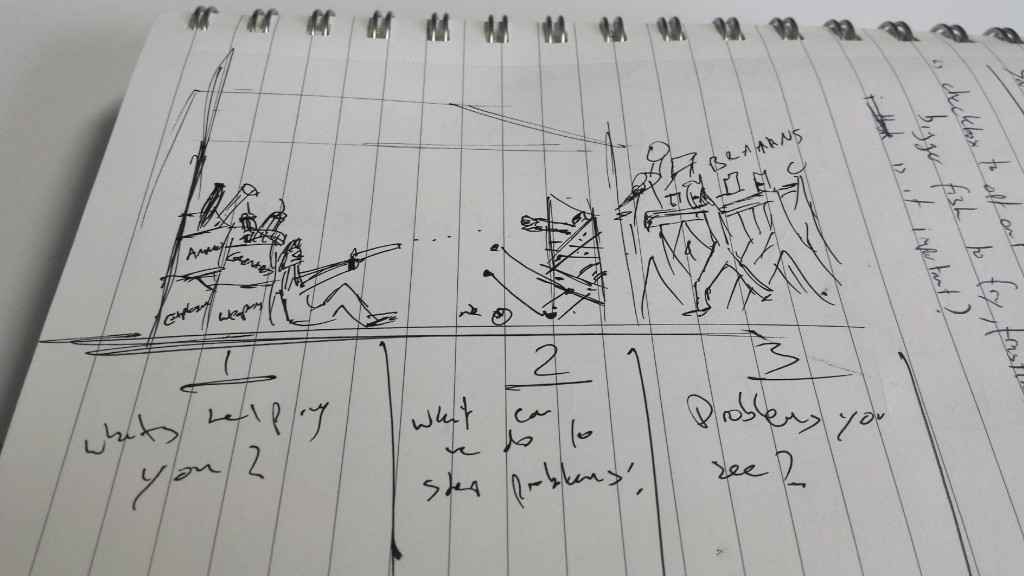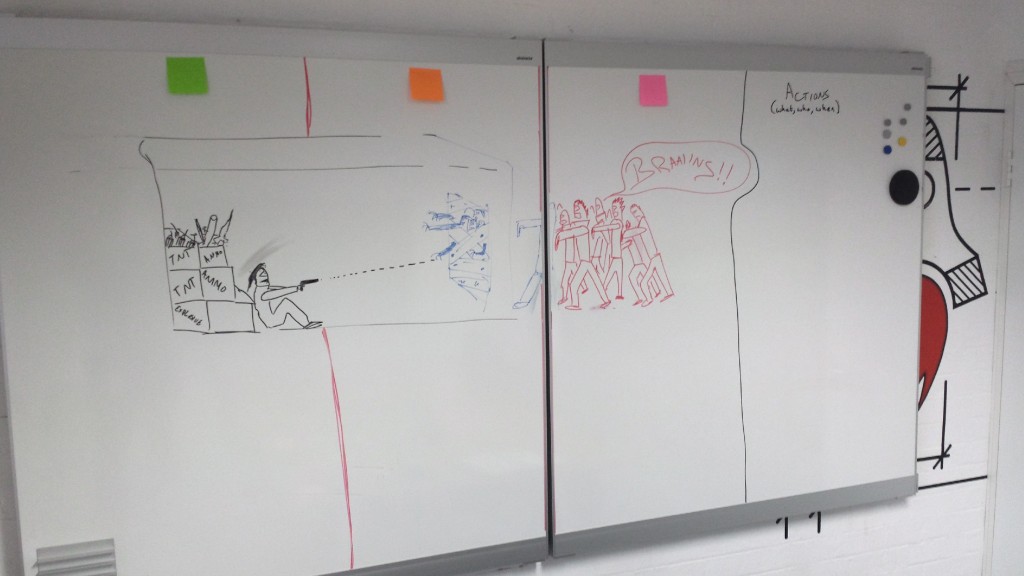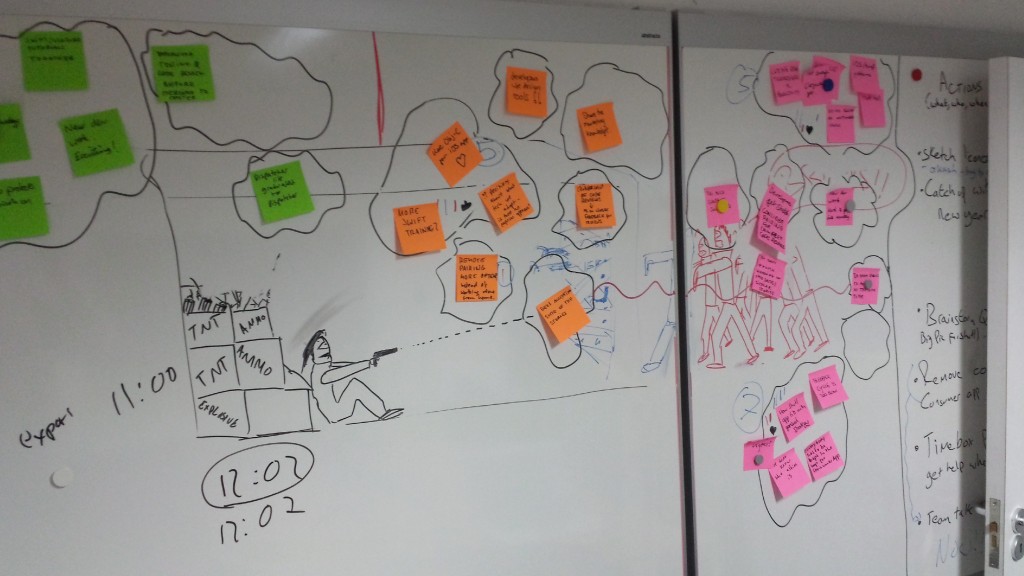The Zombie Apocalypse Retrospective!
I’ve written extensively in the past that I believe that retrospectives should be a creative process and I like to engage the brain using interesting visuals and ideas. I’ve attempted to employ this philosophy at Shutl by trying to use a different theme for every retrospective I’ve run (a recent example of one I found through funretrospectives.com is the catapult retro).
Then a few weeks ago, I made a comment to one of our engineers, Volker, that you could pretty much take any situation you can think of and turn it into a retrospective idea, and thus the challenge of a Zombie Apocalypse themed retro was born!
Limitations of more ‘traditional’ retrospective formats
I was first introduced to retrospectives in 2007. Back then, a typical retro would follow the starfish format (or some variation). However, over the past few years I’ve started to see some limitations of such formats and have moved towards a slightly adapted format in an attempt to address some of the common anti-patterns.
I now try to incorporate action items into the brainstorming section in an attempt to both streamline the time taken and also to focus the group on constructive conversation. Doing this achieves a few things:
- Shortens the overall time taken by having the group not only identify what’s helping/hindering the team, but what they can carry forward to improve their performance in the future
- Ensures a more constructive mindset by adding a focus on suggestions for addressing hindrances during the brainstorming itself
- Helps create more achievable action items by modifying the typical “action item” phase of the retro to instead be a refinement phase where previously suggested actions are analysed and prioritised.
Exploring the idea
I started by scribbling and sketching out some ideas in my notepad, with the above goals in mind; after a short while I had come up with a basic draft for the structure of the retro:
I bandied the idea around my head for a day or so and the finished product looked as follows:
The format
The picture above was drawn on a large whiteboard and divided into three colour-coded sections (with a 4th column for action items, complete with a reminder that our final actions require a ‘what’ a ‘who’ and a ‘when’).
Section 1 – Green Stickies
This is you, huddled in the corner, with your stockpile of weaponry at the ready, bravely flighting off the ravenous horde crashing through your doorway.
What’s your ammo? On green stickies, write down all those things that are fuelling your team’s successes and working in your favour.
Section 3 – Pink stickies
This is the zombie horde. A relentless army of endless undead marching towards your destruction.
Use pink stickies to identify the problems that you are facing (including potential problems that you can foresee in the future)
Section 2 – Orange stickies
This is your perimeter. The security measures you’ve installed to resist the horde and ensure your survival.
As you’re identifying the issues you face and the current behaviours that are fuelling your success, think about what actions you can take today to either address these issues or ensure continued success. The idea is to try to come up with a solution or suggestion for every problem that you can see on a pink sticky.
I gave the team about 7 minutes for the brainstorming, with the usual suggestions of collaboration and encouraging people to talk to each other and look at each other’s suggestions. There are plenty of countdown timers you can use, I personally use the 3-2-1 dashboard widget.
We then had a round of grouping and voting (each team member gets 3 votes) with a reminder that you should votes on things you want to discuss, not just things you agree with (e.g. you could strongly disagree with a point on the board, and vote for it to start a discussion). Due to the nature of the board, if thing go well, groups of pink stickies should hopefully have corresponding orange ones to direct the discussion towards action items.
I try to write down all action items that come up with a caveat that we’ll have 5 minutes at the end to review the actions, prioritise and pick the ones that we actually want to address; this keeps the discussions flowing. We actually ended up with some conflicting action items which was fine, the idea was to get all the potential actions down, and then at the end decide which we feel are the most valuable.
During this final review of the actions, we also assign owners and deadlines and we’re done!
Here’s what the final board looked like after our 45 minute retro was complete:
Next challenge: what crazy (yet effective) retrospective formats can you come up with?



